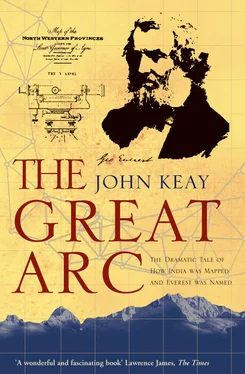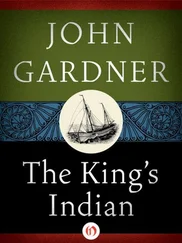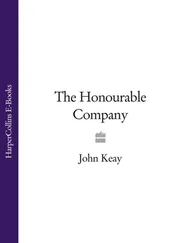Subsequently landing in Calcutta, Dinwiddie had made a handsome living from performing astronomical demonstrations. But he now graciously agreed to sell his props for science, and the chain in particular would serve Lambton well. Comprised of forty bars of blistered steel, each two and a half feet long and linked to the next with a finely wrought brass hinge, the whole thing folded up into the compartments of a hefty teak chest for carriage. Thus packed it weighed about a hundredweight. Both chain and chest are still preserved as precious relics in the Dehra Dun offices of the Survey of India.
A suitable theodolite for the crucial measurement of the angles of Lambton’s primary triangles was more of a problem. A theodolite is basically a very superior telescope mounted in an elaborate structure so that it pivots both vertically about an upright ring or ‘circle’, thus enabling its angle of elevation to be read off the circle’s calibration, and horizontally round a larger horizontal circle so that angles in a plane can be read in the same way. Plummets, spirit levels and adjustment screws are incorporated for the alignment and levelling of the instrument, and micrometers and microscopes for reading the calibration. Additionally, the whole thing has to be rock stable and its engineering, optics and calibration of the highest precision. In fact there were probably only two or three instruments in the world sufficiently sophisticated and dependable to have served Lambton’s purpose. Luckily he had discovered one, almost identical to that used by William Roy, which had just been built by William Cary, a noted English manufacturer. But it had to be shipped from England, a considerable risk in itself for an instrument weighing half a ton and about the size of a small tractor. And unfortunately the ship chosen was unaccountably overdue.
It had still not arrived when Lambton marked out and cleared his Madras base-line. The site chosen was a stretch of level ground between St Thomas’s Mount, a prominent upthrust of rock where the ‘doubting’ apostle was supposed to have once lived in a cave, and another hill seven and a half miles to the south. Situated on the south-east edge of the modern city, the Mount has since been overtaken by development, but the other end of the base-line is still predominantly farmland and scrub as in Lambton’s day. Having cleared and levelled the ground and aligned the chosen extremities, Lambton commenced measurement with Dinwiddie’s hundred-foot chain.
By now he had received from England a second chain, but this was reserved as a standard against which Dinwiddie’s was frequently checked for any stretching from wear or expansion. Expansion and contraction due to temperature change was a major problem. William Roy of the Ordnance Survey, while measuring his first base-line on Hounslow Heath (now largely occupied by Heathrow Airport), had discarded both wooden rods and steel chains before opting for specially made glass tubes. Lambton in India had no such handy alternative; he had to make the best of the chains. When in use, the chain was drawn out to its full hundred feet and then supported and tensioned inside five wooden coffers, each twenty feet long, which slotted cleverly onto tripods fitted with elevating screws for levelling. Each coffer he now equipped with a thermometer which had to be read and recorded at the time of each measurement. By comparison with the other chain, which was kept in a cool vault, a scale of adjustment was worked out for the heat-induced expansion.
But April and May are hot months in Tamil Nadu. The temperature seesawed between 80 and 120 degrees Fahrenheit. Although Lambton says nothing of the inconvenience of working in such heat, he was worried sick by the variations. After endless experiments he came to the conclusion that a one-degree change of temperature made a difference of 0.00742 of an inch in the hundred-foot length of the chain. But were the locally purchased thermometers sufficiently accurate? And might the temperature not have changed in the interval between marking the measurement and reading the thermometer? Lambton was deeply concerned; measurements and readings were to be taken only at dawn or in the early afternoon when the temperature was as near stable as it got; the thermometers were checked and rechecked, both chains measured and remeasured against a standard bar. Nothing gives a better idea of his passion for shaving tolerances to an infinitesimal minimum than this pursuit of a variable amounting to just seven thousandths of an inch.
To complete the full seven and a half miles of the base-line required four hundred individual measurements with the chain. For each of these measurements the coffers and tripods as well as the chain itself had to be moved forward. It was a slow business even after Lambton’s men had been drilled to do it by numbers. The whole measurement took fifty-seven days, and that did not include the time needed for the construction of end-markers. These were meant to be permanent and so had to combine the durability of a blockhouse with the hairline precision required for registering in the ground the actual mark over which the theodolite would be aligned for triangulation.
And still the all-important theodolite had not arrived. In fact report now had it that the ship in which it was stowed had been captured by the French. This turned out to be true. The ship had been conducted into Port Louis in Mauritius and the great theodolite had there been landed and unpacked. Happily the French authorities, when they realised what it was, rose nobly to the occasion. Repacked and unharmed, it was gallantly forwarded to India and arrived in September ‘along with a complimentary letter to the government of Madras’.
Lambton could at last begin his triangulation. In late September he took angles from his base-line to pre-selected points to the south and west. The short southern series of triangles down the coast was to determine the length of a degree; it took about a year. Then in October 1804 he turned his back on the coast. Heading west and inland, he would carry his triangles right across the peninsula and then begin the north – south series known as the Great Arc.
Over the next twenty years sightings of Lambton in Madras would be of rare occurrence. As in Canada, he seemed again to have disappeared into a continental void; perhaps after six years on the public stage, he was happy enough to slip back into the wings of obscurity. But the government insisted on progress reports and the scientific world awaited his findings. Lambton’s personal papers would disappear with him. Until the young Everest joined him in late 1818 there are few firsthand accounts of his conduct or his establishment. But his reports found their way into the Survey’s files and his scholarly monographs into learned journals. Additionally one of his assistants would pen some recollections; and there is the unexpected evidence of two Lambton children, both born while he was working on the Great Arc. As he later admitted, the years spent in India pursuing his obsession would be the happiest of his life.
THREE Tall Tales from the Hills
When measuring a base-line it was important to discover, as well as its precise length, its height above sea-level. Other heights ascertained in the course of triangulation could then be expressed in terms of this universal standard rather than in terms of individual base-lines. To establish what would in effect be the vertical base of his whole survey Lambton had therefore chosen a site for his base-line which was only three or four miles from the Madras coast and looked, given the lie of the land, to be only a few feet above it. But working out exactly how many was still a matter of some delicacy.
First, on the sands to the south of Madras’ famous Marina Beach, the highest tides had been carefully observed and their maximum reach marked with a flagpole. (In 1802 ‘sea-level’ was construed as high water, although later in the century a mean between high tide and low tide would be adopted as the standard and all altitudes adjusted accordingly.) From this flagpole on the beach the horizontal distance to the grandstand of the Madras racecourse, still today hard by St Thomas’s Mount, was carefully measured by chain; it came to 19,208 feet. Next, from the railings at the top of the grandstand the angle of depression to the flag on the beach was observed by theodolite. Then the process was reversed with the angle of elevation from the beach to the stand being observed.
Читать дальше












